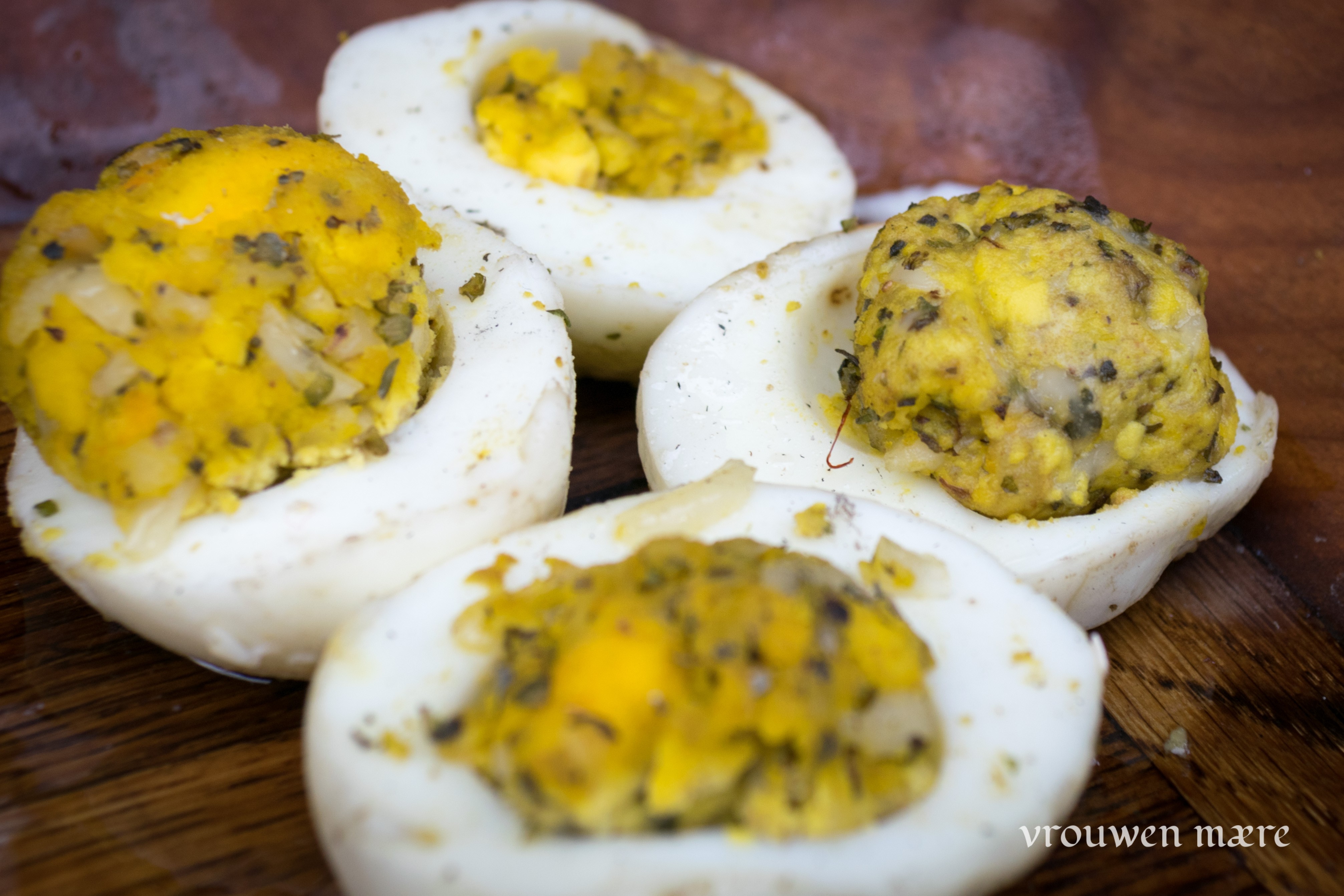Ove Plene / gefüllte und gebratene Eier
Geschrieben in Rezepte am 04.02.2019 von Eva-Maria
In mittelalterlichen Rezepthandschriften findet sich eine Vielzahl an Eierspeisen. Kein Wunder, waren die kleinen Proteinbomben doch ebenso leicht verfügbar wie sättigend. Besonders "gefüllte" oder "kross gebratene" Eier tauchen immer wieder auf und verblüffen mit ihrem Variantenreichtum. Wir haben eines der einfacheren Rezepte ausprobiert - nichtsdestotrotz waren sie extrem lecker und im Nu verputzt!
Ove Plene / gefüllte Eier
Dieses Rezept stammt aus dem venezianischen Libro di cucina/ Libro per cuoco (14.-15. Jahrhundert, Autor unbekannt). Doch nahezu jede andere mittelalterliche Kochhandschrift kennt ein ähnliches Rezept, wie z.B. Ein mittelniederdeutsches Kochbuch des 15. Jahrhunderts von Hans Wiswe (Hg.), wo die Eier noch in schmackhafter Gewürzsauce serviert werden (Rezept Nr. 32).

XLVII. Ove plene.
Se tu voy fare ove implite, toy le ove e mitili a bolire e fay che siano ben duri e quando sono cocti traili fuora e mitili in aqua freda e schovrali e tagliali per mezo e trane fuora lo rosso e toy caxo magro al piú che tu poy che sia ben dolze e herbe bone che tu ay ben monde e ben lavate e pestali in lo
mortaro. Quando sono bene menate, toy lo rosso de l' ova, el chasso e le specie e mecti in el mortaro con le herbe bone insieme e pesta bene e fay pastume, e distempera con ove crude e fay che non sea bono, e miti in la padella sopra el focho, e toy li elapi del ova che tu ay e impleli de questo pastume e fay choxere. Quando sono cocti trali fuora e polveriza di sopra del zucharo e dali caldi a tavola. E se tu voy fare savore, toli, etc.XLVII. Stuffed eggs.
If you want to make stuffed eggs. Take the eggs and put them to boil and make sure that they are hard cooked. When they are cooked pull them out (of the hot water) and put them in cold water. Peel and slice (the eggs) in half and remove the yolk (reserve). Take the fattest sweetest cheese that you have. Take the best herbs that you have, peel them (from the stalk) wash and grind them together in a mortar. When they (the herbs) are well ground take the egg yolks, the cheese and spices and put them in the mortar with the good herbs. Grind all these things together to make a fine paste and temper (mix) with raw eggs until it is good (has the right consistency). Meanwhile put a frying pan over the fire. Take the egg halves and stuff with the paste (of egg yolks and cheese) and put them to cook (in the frying pan). When they are cooked remove from the pan and powder them with sugar before serving them hot to the table. And if you want to serve them savory take them (without sugaring them), etc.
Quelle: Libro di cucina/ Libro per cuoco (14.-15. Jahrhundert, Venedig, Autor unbekannt) (Link zum Text im italinienischen Original, englische Übersetzung)
Zutaten:
10 Eier, hart gekocht
Majoran, frisch oder getrocknet
Safran
Nelken, zerstoßen
Käse, gerieben
Butter
Zubereitung:
- Eier hart kochen, schälen und halbieren.
- Eigelb herausnehmen und in eine Schüssel geben.
- Majoran klein hacken und mit Safran und Nelken im Mörser zerstoßen.
- Die Gewürze mit geriebenem Käse unter die Eigelb mischen und ggf. mörsern, bis eine feine Paste entsteht.
- Einen Löffel der Füllung in die Eihälften geben, fest drücken und die Eier in einer Pfanne kurz anbraten bis sie goldgelb sind.
- Warm oder kalt genießen.

